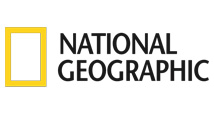Why are turtles important?
Project & Pod News / 09 November 2022
There are seven species of sea turtles and sadly six of the seven are considered either “endangered” or “vulnerable” to extinction due to human impacts.
The seven species of sea turtle are:
- green
- loggerhead
- hawksbill
- leatherback
- olive ridley
- flatback
- kemp’s ridley
The olive ridley is the most abundant sea turtle, with a female population of around 2 million who lay their eggs from Costa Rica to India. Kemp’s ridley is considered the most seriously endangered sea turtle species with only an estimated 9,000 females left.
The leatherback sea turtle is the largest sea turtle, weighing up to 900kg and growing up an impressive 1.8 meters! The kemp’s ridley is the smallest of all the sea turtle species, growing to 70cm and weighing only 45kg.

We have four brilliant projects where volunteers help the local teams to conserve sea turtles:
- Turtle Conservation in Greece – helping loggerhead turtle nests and hatchlings, monitoring green sea turtles in the harbour
- Turtle and Wildlife Conservation in Costa Rica – monitoring and protecting olive ridley sea turtle nests and hatchlings
- Marine Conservation in Thailand – researching and monitoring green and hawksbill sea turtles
- Marine Conservation in South Africa – recording sightings and collecting photos of green, hawksbill and loggerhead turtles
Sea turtles are incredibly important to the ecosystem as they are a "keystone species", which means they are a vital part of their environment and if the were removed from their habitat, it would change dramatically and there would be big impacts on other wildlife.

Sea turtles have been around for more than 100 million years and are an important part of the food web. For example, green turtles help to maintain seagrass meadows, leatherbacks eat and control jellyfish populations, while hawksbill mainly eat and manage sponges from corals.
Sea turtles migrate huge distances so they play an important role in transporting the organisms that live on them and essential nutrients from beaches, to reefs, seagrass beds and the open ocean.
Sadly the populations of turtles around the world are impacted and have been reduced by many human activities.
Tough start to life
It's estimated that only between one in 1,000 or one in 10,000 hatchlings make it to adulthood.
Fishing nets don’t only trap fish
Although loggerhead sea turtles can sometimes live up to 60 years old, sadly many don’t even make it to 40 years old. This is due to the impacts of fishing, where thousands of turtles drown after getting caught in fishing nets and trawling equipment.
Tasty looking plastic bags
Plastic ingestion is cutting the life of sea turtles short as so much waste is ending up in our oceans. Sea turtles often mistake plastics, such as bags, for food and die. Many plastics take over 500 years to decompose and even when plastics are broken into small pieces they become microplastics and end up in the food chain. The impacts that microplastics have on animals and humans is not fully understood yet.
Global warming leading to more female turtles
Different species of sea turtle have different cluth (nest) sizes, ranging from 50 eggs up to 200 eggs! The temperature of the sand determines the sex of each egg, with warm temperatures leading to female hatchlings and a shorter incubation period. For example in Greece if the sand is warmer than 29 °C, then the nest will yield female turtles, however, if the sand is cooler than 29 °C the nest will yield male turtles. Climate change is slowly shifting the sex ratio of sea turtle nests worldwide to be female biased, making this area of research extremely important to the future of the species.
Ssshhh – don’t wake the turtles too early!
When one egg within the nest begins to hatch out of its shell, its movements cue the others in the nest to begin to hatch out of their shells. Hotels, beach bar parties or vibrations from machinery can cause a nest to hatch earlier than it is supposed to hatch meaning they are less likely to survive.
Sandy nests
Habitat loss from new tourism developments means that there are less safe beach areas due to hotels and bars building built in their ideal nesting locations. This forces the turtles to nest in areas with poor quality sand which could mean that the nests are destroyed before the hatchlings emerge.

Our turtle conservation projects are looking for passionate volunteers to help them research, monitor and conserve these incredible animals. Head to our project pages to find out how you can help:







